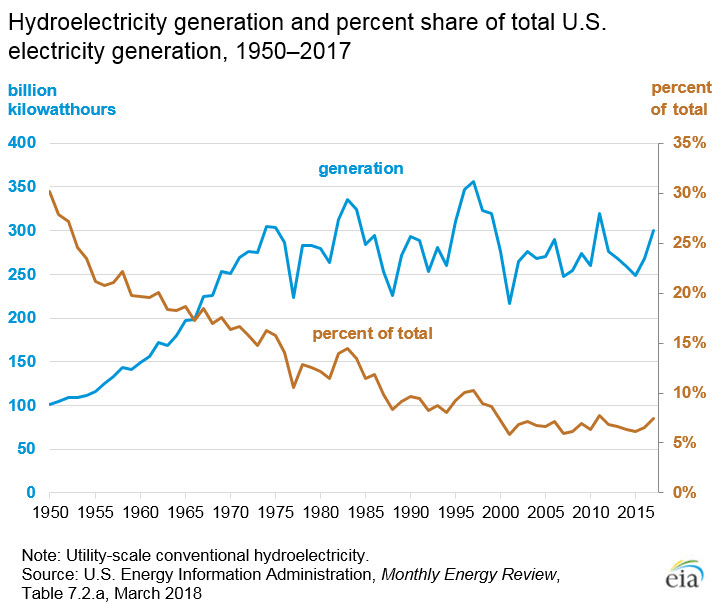
Water into wine. Impressive. Water into electricity…Planet Saving! Did you know that hydropower is actually the oldest form of renewable energy? We’ve been harnessing the power of water through water wheels and turbines for centuries. The Ancient Greeks, Chinese, Romans and Asian Indians used water power to pound grains and power irrigation systems. In 1881 a dynamo connected to a turbine in a flour mill provided street lighting at Niagara Falls. In 1936 the Hoover Dam was completed, with one of its 3 purposes being to provide power. The Snowy Mountains Hydro-electric Scheme in Australia, with a capacity of 3800MW, is the nation’s largest hydro scheme and is one of the most complex integrated water and hydroelectricity schemes in the world. Construction took 25 years and consisted of seven power stations; 16 major dams; 145 kilometres of inter-connected tunnels and 80 kilometres of aqueducts!
Part of the beauty of hydropower is in its simplicity. Falling water is channeled through water turbines. The pressure of the water causes the turbine blades to rotate a shaft to drive an electrical generator, converting the motion into electrical energy. See, simple.
Can something so simple, really work?? We ask: can hydropower be harnessed in enough volume to provide vast amount of electricity. The answer is yes. The Hoover Dam alone provides 4 billion kWh of power each year, which serves 1.3 million people across Nevada, Arizona and California. But did you know that every US state has hydropower facilities? In 2017, the top 5 hydropower generating states were Washington, California, Oregon, New York and Montana (this ranking changes each year, dependent on precipitation). In 1940 hydropower accounted for 40% of electrical generation in the Unites States! Today, that number has dwindled to a paltry 7.5% (300 billion kWh hours). Given the simplicity of the way water can be used to produce electricity, why aren’t we seeing more of it?

Well there is actually momentum behind a move for the current U.S. President to renovate and upgrade dams (and possibly build more) across America to increase this output. In 2016, The Department of Energy concluded that the United States could grow its hydropower capacity from 101 gigawatts in 2015 to nearly 150 gigawatts by 2050. That would be enough to power 35 million average U.S. homes.Talk of building new dams can often send environmentalists into quite a lengthy internal tizzy, what with the damage to land and wildlife Vs the reward for renewable energy, and I get it.

Building hydroelectric dams is not a cut and dried, black and white simple solution for providing renewable energy. But let’s not forget that technological and architectural advances can help wildlife too…did you know that the Bonneville Dam on the Colombia River has a fish ladder; and the Safe Harbor Dam on the Susquehanna River has elevators, to ensure that migrating fish, like salmon and shad, don’t get trapped by the dams? Seriously amazing! Moving on (up?), as I was saying, renovating existing hydroelectric dams seems like a good way to fulfill President Trump’s promise to boost U.S. energy production. Plus, there is actually 12,000 MW of electrical potential sitting in dams which just do not have hydroelectricity generators. Addressing this seems like a pretty simple first step, right? Stay tuned for the next installment in the Source Series, looking at very clever geothermal energy.



